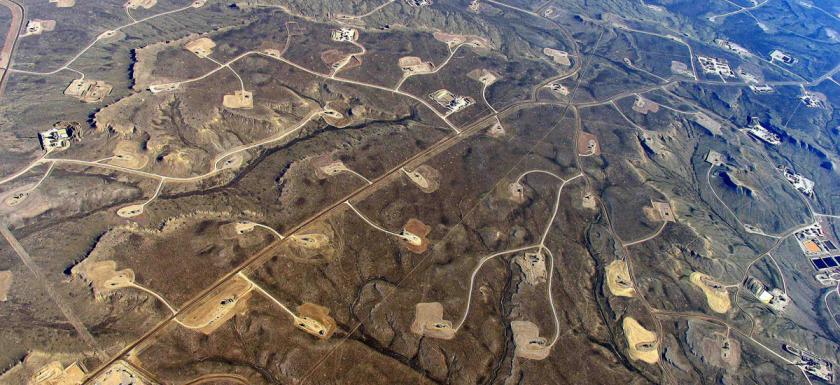Over the last decade or so, observers have noted a spike in the methane concentration in Earth’s atmosphere. But while the rising concentration has evoked concern, information on sources have so far been speculative. A Cornell University study has now shed new light on this. According to the study, the spike can be attributed to shale gas produced through ‘fracking’ or hydraulic fracturing rather than the usual fossil fuel suspects such as conventionally produced natural gas.
While previous studies have glossed over the methane emissions from shale gas production, this study found that “unlike the 20th century, when the rise in atmospheric methane was accompanied by an enrichment in the heavier carbon stable isotope (Carbon-13) of methane”, the greenhouse gas in recent years has depleted levels of this isotope. According to the study, this points to a biogenic source for the increased methane. This ties in with the scientific fact that Carbon-13 levels in shale gas is somewhat depleted compared to conventional natural gas. Hence, the study’s conclusion.
What is more alarming, however, is that the study says about two-thirds of all new gas production over the last decade has been shale gas produced in Canada and the US, whose government is in climate change denial mode. While methane has been known to trap as much as 56 times more heat than carbon dioxide over a 20-year period, the social costs of methane are estimated to be up to 100 times that of carbon dioxide- the primary climate change trigger.
What this means is that if methane levels are not contained soon, climate change and its impacts will both intensify significantly. Methane levels have already increased dramatically from 2008-2014 — from about 570 teragrams (570 billion tonnes) annually to about 595 teragrams – primarily because of human-caused emissions. “This recent increase in methane is massive,” said author of the paper, Robert Howarth, the David R. Atkinson Professor of Ecology and Environmental Biology at Cornell University in the US. “It’s globally significant. It’s contributed to some of the increase in global warming we’ve seen and shale gas is a major player.”
But all is not lost, yet. According to the study, while the rising levels of both carbon dioxide and methane are triggering climate change, methane’s effect on the atmosphere is far more mercurial. The climate responds slowly to changes in carbon dioxide emissions, the effects of which will be felt for decades to come. However, atmospheric response to changes in methane ceoncentrations are much faster. “Reducing methane now can provide an instant way to slow global warming and meet the United Nations’ target of keeping the planet well below a 2-degree Celsius average rise,” Howarth said.
“If we can stop pouring methane into the atmosphere, it will dissipate,” he said. “It goes away pretty quickly, compared to carbon dioxide. It’s the low-hanging fruit to slow global warming.”
About The Author
You may also like
Air Pollution is Changing the Lightning Patterns in India, Study Finds
India to Expand Coal Power Capacity Until 2047 to Ensure Grid Stability and Energy Security
Temporary CO2 Removal Will Help Offset Methane Emissions: Report
Rise in Fossil Fuel Burning is Making Floods Lethal in Asia
EU to waste billions on hydrogen pipelines in new PCI list, warns experts

